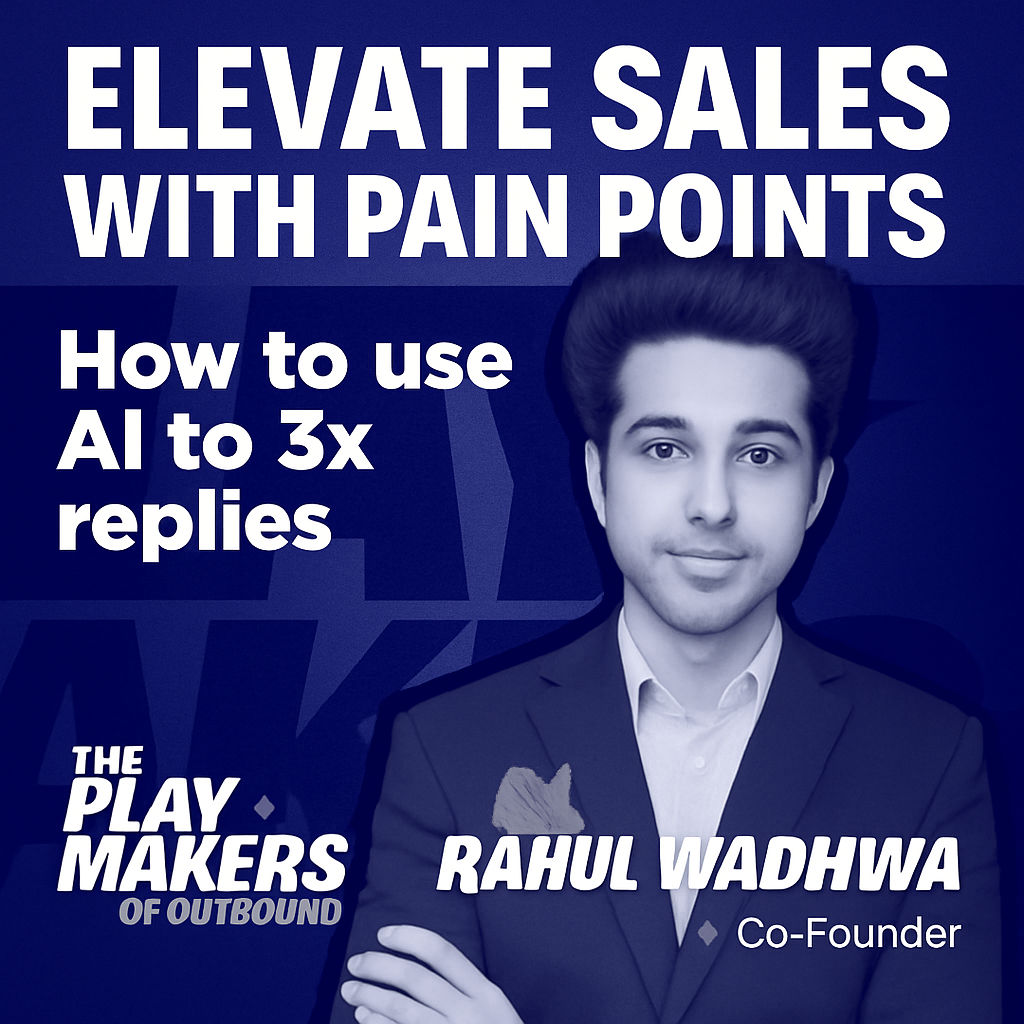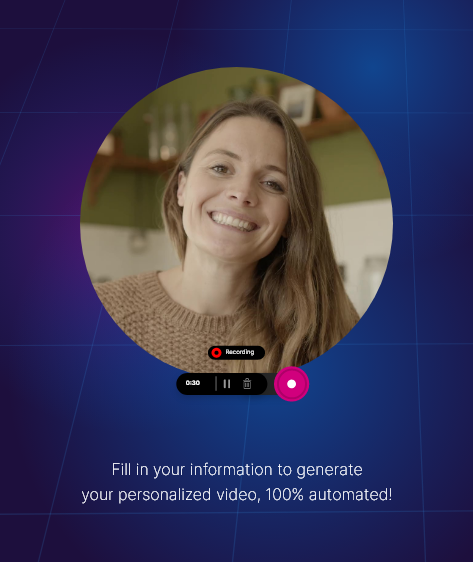Understanding your buyer’s pain points is proven to dramatically boost outreach reply rates and meetings booked. No matter what product or industry, tapping into genuine customer pains leads to more conversations and wins. In modern outbound sales, it’s no longer about blanket pitches—it’s about speaking to the pain buyers can’t ignore. This approach can be systematized with smart tools and frameworks that go deep to uncover your buyers’ real issues.
Based on the original video:
Why Prospects Respond to Pain-Driven Outreach
Every successful outbound campaign starts with one fundamental insight: people don’t buy features. They buy because you promise relief from a pressing pain or problem. When sellers target these underlying issues—instead of product specs—they see engagement skyrocket. The data backs this up: sellers who focus on pain-driven messaging often see 2 to 3x higher reply rates and nearly double the number of meetings booked compared to generic, surface-level outreach.
Think about your own inbox. Few people wake up excited to get a sales pitch. But when a message hits a nerve—revealing a pain you’re actively dealing with—it stands out.
- Higher open and reply rates when your messaging targets authentic pains
- More meetings thanks to immediate emotional relevance
- Faster sales cycles, because urgency is built-in when you talk solutions to real problems
The “Pain Detective” Method: Digging Deep to Uncover Key Pain Points
The Pain Detective approach makes pain-centric selling practical and repeatable. It’s a step-by-step process (often powered by a custom GPT tool) designed to extract, organize, and prioritize the core issues that move your prospects to act. Why does it work? Because it goes straight to the “brutal emotional relevance” that modern buyers respond to. This method moves beyond guesswork to deeply understand what’s actually hurting your prospects—and tailor your pitch accordingly.
Step 1: Get to Know Your Personas Intimately
Everything starts with rich customer insight. You need to “walk a day in the life” of your ideal buyer. Tools like ChatGPT or YouTube can help you uncover typical challenges and daily frustrations faced by roles like SDR leaders, revenue managers, or operations heads. The more context you gather, the more resonant your outreach will become.
- Research your target buyer’s job titles, workflows, and biggest headaches
- Leverage interviews, podcasts, or recorded discussions from industry experts
- Note emotional triggers and recurring complaints
Step 2: Use a Custom GPT (Generative Pre-trained Transformer) to Surface Deep Pains
The heart of the Pain Detective play is its automated, conversational tool. Here’s how it works:
- Answer guided questions—like “What does your product do?”, “Who is your buyer?”, and “What pains drive their purchase?”.
- The tool analyzes your input, then dives deep to uncover overlooked or subconscious pain points.
- It generates a long list of pains, split into urgent, life-altering problems and nagging, emotional obstacles.
This step turns intuition into actionable insight. Sales teams who use this method consistently find double the engagement in their cold sequences.

Step 3: Scoring, Categorizing, and Mapping Out Pain Points
Not all pains are created equal. Once you generate a list of target pain points, ask the tool to rate and categorize them:
- Score on urgency and emotional impact: Which problems need solving right now?
- Sort by relevance: Which pains are universal vs. unique to niche segments?
- Select the top five: Focus your messaging on the most powerful levers to motivate action
Want to further optimize? Ask your AI tool to explain its reasoning behind each pain score, giving your team confidence in prioritizing which issues to spotlight in your emails and calls.
Injecting Pain Points into Outbound Messaging—The Right Way
With your prioritized list in hand, it’s time to reinvigorate your outbound strategy. But don’t overwhelm prospects with every pain you’ve uncovered. Instead, methodically spread these insights throughout your outreach sequence:
- Start your email, LinkedIn message, or voicemail with the most urgent pain
- Use secondary touches (follow-ups, videos, voice notes) to address supporting pains
- Tailor your messaging for each channel—what works in email may need a different twist for social
The result? Outreach feels less like a pitch and more like a diagnosis—offering immediate value to prospects and prompting deeper replies.
Example: Using Pain Detective for a Hypothetical B2B Product
Suppose your product is a sales workflow automation platform. You run it through a Pain Detective workflow. After answering the guided prompts, the tool might return pains like:
- “Wasting hours updating pipeline data manually”
- “Losing deals because of follow-up delays”
- “Stress from juggling too many cold leads”
- “Burnout due to repetitive tasks”
The process then scores these for urgency and emotion. Your first outreach could focus on the top pain, while subsequent touchpoints probe and address the others—making your entire sequence flow naturally from your prospect’s real struggles.

Why Emotional Relevance Trumps Product Specs Every Time
The reason pain-driven messaging outperforms features-based outreach is simple: emotion is what prompts action. Buyers are more likely to reply to emails or schedule calls when they feel “seen”—that is, when your outreach precisely articulates a pain they are experiencing at work. Product features matter, but only when they are directly tied to a pain that’s urgent and costly for the recipient. The best playbooks and tools align your solution with those business-critical, emotionally charged issues.
Best Practices for Using AI to Discover Customer Pain
Whether you adopt a tool similar to Pain Detective or leverage other AI and GPT-powered platforms, some best practices ensure you’re triggering the strongest emotional connection:
- Ask specific, open-ended questions about everyday tasks and stressors
- Validate your findings with real customer quotes and industry research
- Refresh your pain point lists quarterly as buyer challenges evolve
- Segment messaging by job title, industry, and revenue band for maximum accuracy
Scaling the Pain Detective Approach Across Teams
This play isn’t just for SDRs. Sales leaders, trainers, and even product marketers benefit from aligning messaging to the pain-first framework. For companies looking to systematize hiring, onboarding, or enablement, using custom AI to map buyer pain across multiple roles accelerates ramp time and transforms sales effectiveness.
Companies that integrate Pain Detective or similar methods into training and onboarding see their ramped reps hitting quota faster. By focusing new hires on problem-solving language and empathy in messaging, teams develop sharper emotional intelligence—a trait that can’t be taught with scripts alone.
Applying Pain-Focused Messaging in Modern Sales Enablement Platforms
Today’s top sales automation and enablement technologies (many powered by AI and machine learning) allow you to:
- Feed pain points directly into smart sequencing and cadences
- Dynamically personalize outreach templates by persona or vertical
- Track response rates tied to specific pains and messaging themes
Using the right mix of automation and empathy, sales orgs can continuously refine their approach, keeping messaging fresh and responsive to shifting customer needs. If you’re evaluating which tools maximize these benefits, check out this guide to the best sales automation software and how they support tailored messaging strategies.

Key Takeaways for Maximizing Your Outbound Results
- Effective outbound is rooted in solving real, urgent buyer pain—not pushing product features
- Using AI-powered tools like custom GPTs drastically reduces guesswork in targeting customer pains
- Scoring, segmenting, and mapping pain points ensures messaging hits hardest
- Spreading top pains across your outreach sequence drives greater engagement
- Sales enablement tech can scale and automate pain-driven approaches for faster results across teams
Frequently Asked Questions
How does focusing on pain points improve cold outreach?
It increases reply rates because buyers are more likely to respond when your message identifies and addresses their real, pressing problems rather than generic product features.
What are the steps for running a “Pain Detective” workflow?
First, deeply research your buyer persona. Then use a guided tool to identify and categorize pain points, score them for urgency, and inject the top pains into your multi-step outreach sequence.
Can AI tools like GPT help discover hidden customer pains?
Yes. AI-powered tools ask structured questions and analyze your input to surface pain points that might otherwise be overlooked, making your messaging much more targeted and effective.
How should I use the list of pain points in my multi-touch sequence?
Highlight the most urgent pain in your initial touch, then reference other pains in follow-up messages—personalizing each step to address different aspects of your buyer’s situation.
Is pain-driven messaging only relevant for sales outreach?
No. This approach benefits marketing, product development, and customer success by aligning every interaction around customer needs and challenges.









